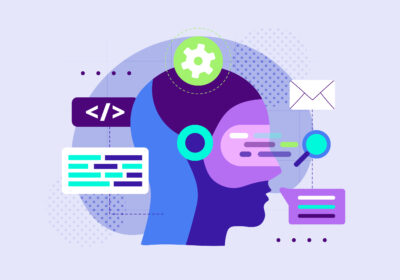Users expect instant results and applications run across continents, latency is the new downtime. We’ve optimized everything from backend processing to CDNs, but there’s still one frontier left to conquer: the physical distance between your app and your user.
That’s where edge-native development comes in.
It’s not just a buzzword. It’s a fundamental shift in how we architect and deploy software to make it truly responsive, resilient, and user-centric.
So, What is Edge-Native Development?
Edge-native development means designing and running your applications closer to the end user—on edge servers, edge nodes, or local devices—instead of relying solely on centralized cloud data centers.
If cloud computing is about elasticity and scale, edge computing is about speed and proximity.
In an edge-native model:
-
Code executes geographically near the user
-
Data is processed locally or regionally
-
Decisions are made at the edge, not round-tripped to a faraway core server
This makes applications:
-
Faster (lower latency)
-
More resilient (less dependence on the core network)
-
Smarter (context-aware and real-time)
Why Edge-Native? Why Now?
A few trends are driving this shift:
-
5G and IoT Explosion
From self-driving cars to smart factories, edge-native infrastructure allows real-time decisions where every millisecond counts. -
AI at the Edge
Models are getting smaller and faster. We can now run inference engines (like voice assistants or vision processing) on edge devices. -
User Expectations
Modern users want low latency, high availability, and seamless experiences—whether in New York, Nairobi, or Nagpur. -
Data Privacy & Sovereignty
Edge-native design supports regional data handling, helping apps comply with GDPR, HIPAA, and local data laws.
Core Principles of Edge-Native Architecture
Let’s break down how edge-native apps are built:
1. Decentralization First
Design for distributed execution and data collection. Avoid single points of failure.
2. Context-Aware Logic
Make local decisions based on edge-specific context—device state, user behavior, or sensor data.
3. Smarter Syncing, Not Always Syncing
Edge systems sync only when needed. Not all data needs to hit the cloud immediately.
4. Resilience by Design
Apps should keep working even if the cloud or internet connection fails temporarily.
5. Latency Budgeting
Build experiences where latency targets are first-class citizens—e.g., <20ms for gaming, <100ms for fintech, etc.
Common Use Cases
-
Retail: Real-time analytics on in-store footfall via local edge boxes
-
Healthcare: Medical imaging processed locally for speed and privacy
-
Industrial IoT: Manufacturing line sensors responding to anomalies in real time
-
Content Delivery: Personalized recommendations rendered at the edge
Developer Toolkit for Edge-Native
-
Platforms: Cloudflare Workers, AWS Greengrass, Azure IoT Edge, Akamai EdgeWorkers
-
Languages: Rust, Go, Node.js for fast, small-footprint services
-
Patterns: Function-as-a-Service (FaaS), containerized microservices, event-driven workflows
Challenges to Watch Out For
Edge-native isn’t magic. It has trade-offs:
-
Debugging complexity across distributed nodes
-
Data consistency management
-
Deployment orchestration at scale
-
Security in loosely connected environments
But with the right observability tools, CI/CD pipelines, and edge management layers, these can be mitigated.
The Future: Hybrid Cloud + Edge is the New Default
Edge-native doesn’t mean abandoning the cloud. It means rebalancing workloads across the spectrum:
-
Core cloud for data lakes, coordination, heavy compute
-
Edge for responsiveness, personalization, and autonomy
In 2025 and beyond, the best apps won’t just run in the cloud—they’ll run everywhere the user is.
Takeaway
Edge-native development brings your app to your users’ doorstep. It:
-
Reduces latency
-
Boosts availability
-
Powers real-time, intelligent experiences
Whether you’re building the next-gen fintech platform, a VR game, or a smart factory dashboard—edge-native is no longer optional.
Want to explore how edge-native can transform your software delivery? Verbat helps teams architect, build, and scale low-latency, high-performance applications for the edge era.





